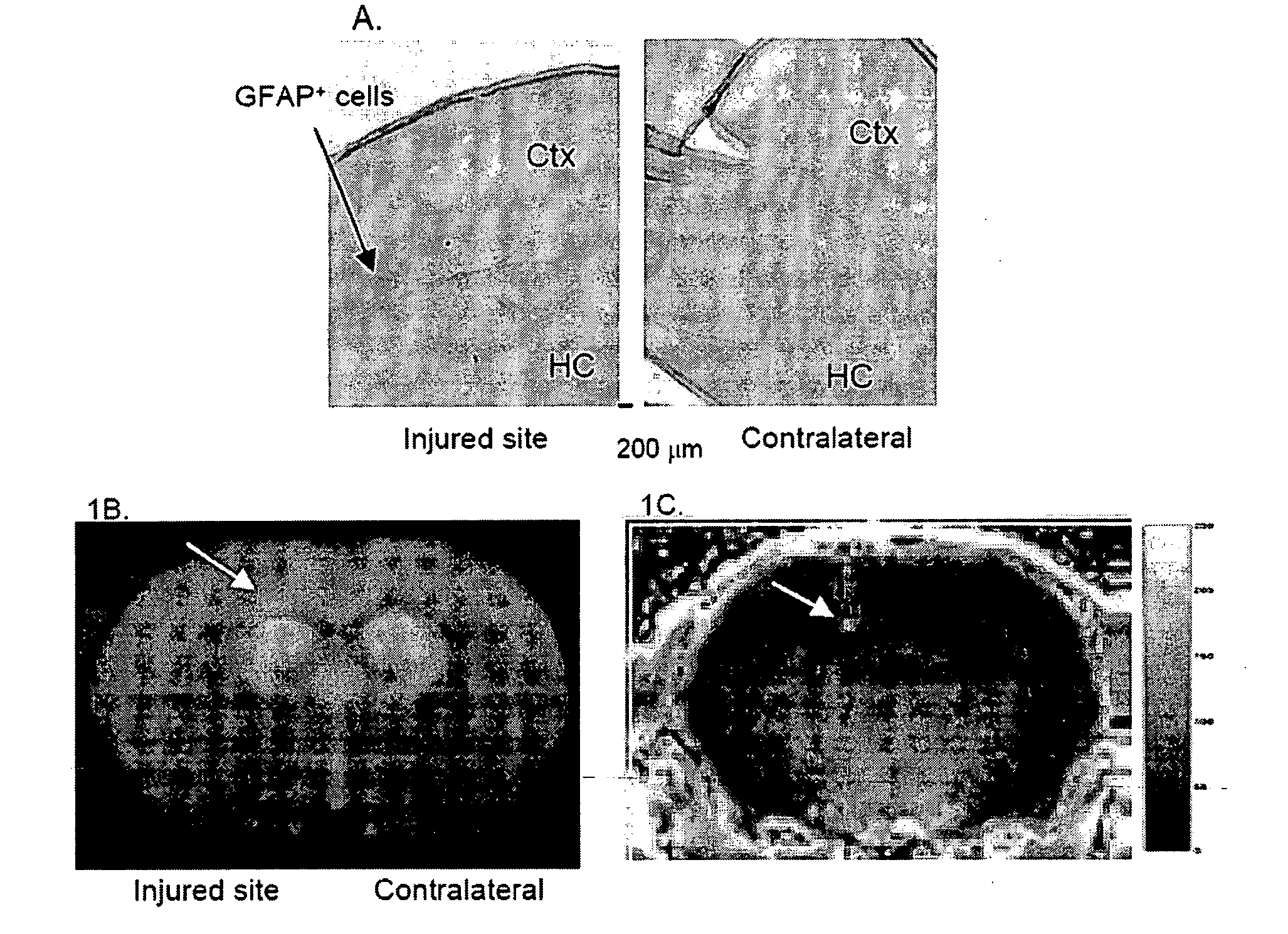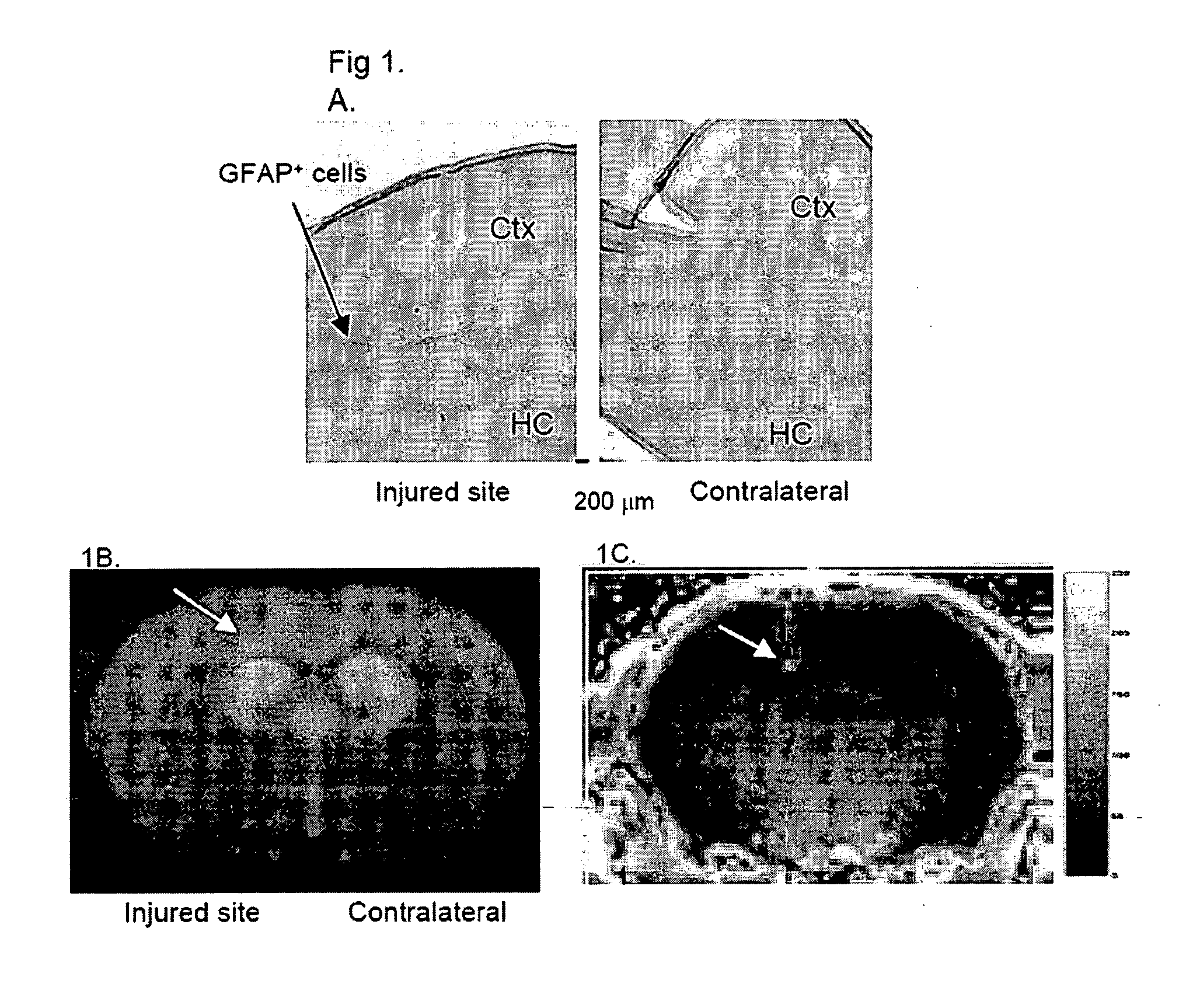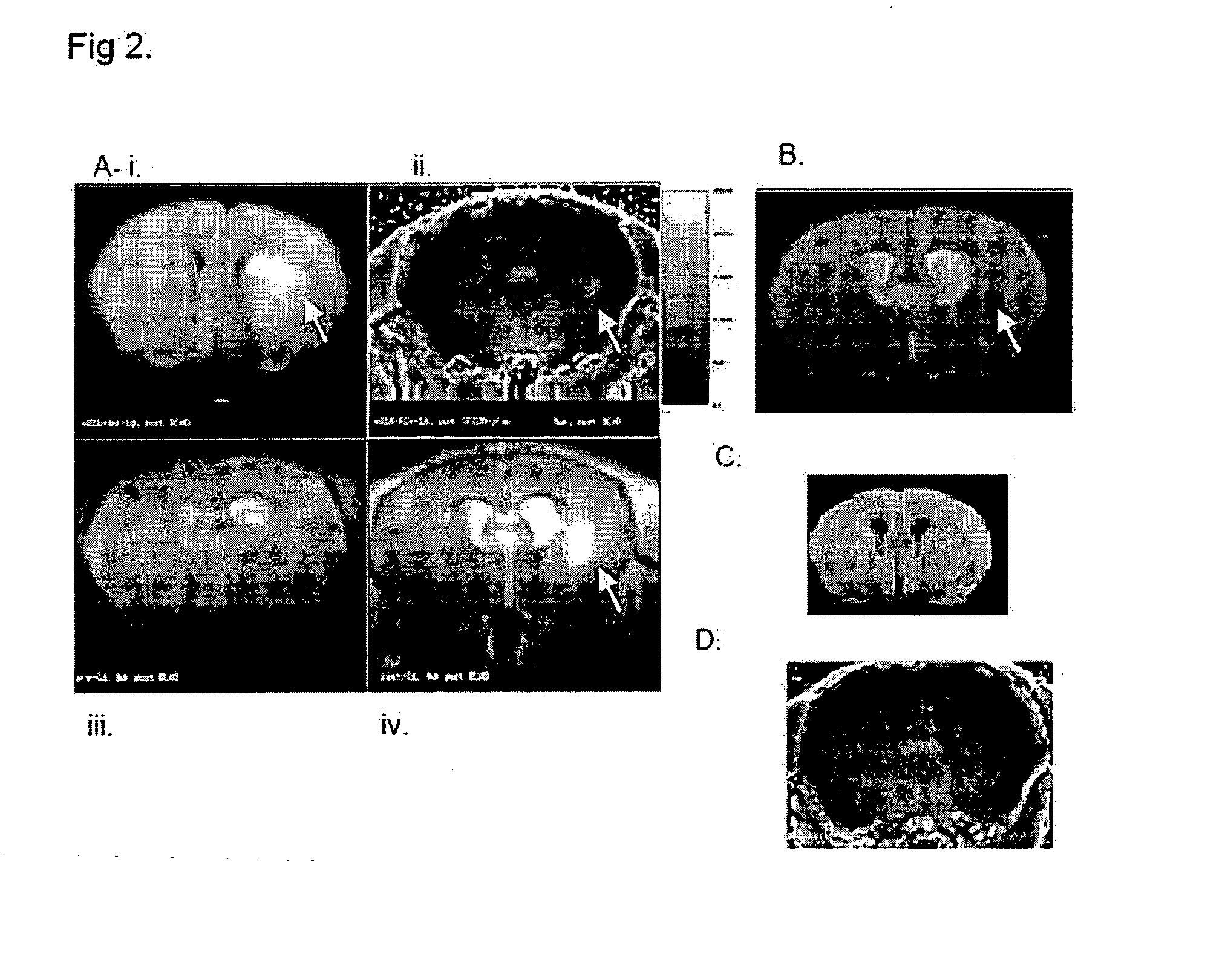Targeting Brain Cells Via Ophthalmic Delivery
- Summary
- Abstract
- Description
- Claims
- Application Information
AI Technical Summary
Benefits of technology
Problems solved by technology
Method used
Image
Examples
example 1
Contrast Agent Linked to a Nucleic Acid
[0073]An active agent of the present invention may comprise a nucleic acid linked to contrast agent such as an MRI contrast agent (e.g., a magnetic particle) that changes the relaxivity of the cells once internalized so that they can be imaged using MRI. The MRI contrast agent can be a paramagnetic label such as a superparamagnetic iron oxide particle whose maximum diameter is between 1 nm and 2,000 nm (e.g., between 2 nm and 1,000 nm or between 10 nm and 100 nm). The particle can be attached to the nucleic acid through entrapment in a cross-linked dextran. In some embodiments, the particle is a monocrystalline iron oxide nanoparticle (MION), an ultra small superparamagnetic iron oxide particle (USPIO), or a cross-linked iron oxide (CLIO) particle. In some other embodiments, the paramagnetic label is a chelated metal such as Gd3+ or Dy3+.
[0074]One nucleic acid molecule can have multiple (e.g., 2, 3, or more) contrast agent molecules attached (a...
example 2
Delivery of Nanoparticles with a Dual Function of Imaging and Targeting Gliosis to Targeted Brain Cells Via Eye Drops
[0092]Brain injury affects one-third of survivors of heart attack. Detecting afflicted tissue by magnetic resonance imaging (MRI), however small and inaccessible by biopsy, can be useful for improving prognosis and correlating behavior deficits. We developed a modular MR probe targeting the gene transcript of glial fibrillary acidic protein (sODN-gfap) to detect glia, known to form scar tissue of the brain. We demonstrate in this example that this probe detected gliosis of brain injury by puncher wound or cerebral ischemia, after application from an eye dropper to the conjunctival sac of C57Black6 mice. This type of modular has other clinical applications such as non-invasive targeting of gene actions in different brain cells when specific mRNA transcripts are known to impact a specific neurological disorder.
Materials and Methods
[0093]SPION-NeutrAvidin: SPION was prep...
example 3
BBB Leakage Induced by Cortical Spreading Depression (CSD) Allows SPION-sODN Uptake in the Brain Via Eye Drop Delivery
[0106]We induced BBB leakage by cortical spreading depression in two mice. This model does not induce brain injury in the hippocampus. Using methods as described in Example 2, we delivered SPION-actin-FITC to these two mice and two sham-operated mice via eye drops. SPION-R2* maps were obtained and analyzed (FIGS. 4A-4C).
[0107]Histology analysis of the CA1 neuronal formation of the hippocampus in the CSD and sham-operated animals was also conducted after eye delivery of SPION-actin-FITC (FIGS. 5A and 5B). Samples were stained red with murine monoclonal Texas Red-IgG to provide enhanced contrast for actin-FITC (yellow).
[0108]We observed that animals having BBB leakage, but not sham-operated animals, retained SPION-actin in the brain cells that express actin mRNA.
PUM
| Property | Measurement | Unit |
|---|---|---|
| Diameter | aaaaa | aaaaa |
| Diameter | aaaaa | aaaaa |
| Diameter | aaaaa | aaaaa |
Abstract
Description
Claims
Application Information
 Login to View More
Login to View More - R&D
- Intellectual Property
- Life Sciences
- Materials
- Tech Scout
- Unparalleled Data Quality
- Higher Quality Content
- 60% Fewer Hallucinations
Browse by: Latest US Patents, China's latest patents, Technical Efficacy Thesaurus, Application Domain, Technology Topic, Popular Technical Reports.
© 2025 PatSnap. All rights reserved.Legal|Privacy policy|Modern Slavery Act Transparency Statement|Sitemap|About US| Contact US: help@patsnap.com



